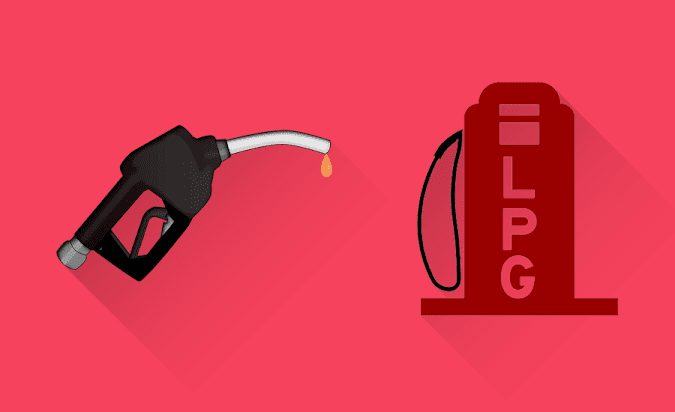Differences between Petrol and Liquid Petroleum Gas (LPG)
Comparison between petrol and liquid petroleum gas
🔗Advantages and disadvantages of liquid petroleum gas (LPG)
Petrol
|
Liquid Petroleum Gas (LPG)
|
Petrol is in the liquid phase at ambient condition.
|
LPG is in gases sate at ambient condition, it is liquefied at high pressure.
|
Petrol has odour
|
LPG is odourless. Powerful odorant like ethanethiol is added to LPG
to detect the fuel leakage.
|
Combustion is not clean as in the LPG
|
Clean combustion.
|
High emission when compared to LPG
|
Low emission
|
Ignition temperature is lower than LPG
|
High ignition temperature
|
|
|
Less vibration and noise.
|
Octane rating is in the range of 80-90
|
Octane rating is about 110
|
Lead is added to petrol to increase octane number. Lead is one of the
major pollutants.
|
LPG is lead-free
|
High energy density
|
Low energy density
|
Fuel consumption is less when compared to LPG
|
Fuel consumption is around 10% more when compared to Petrol.
|
The petrol engine suffers the knocking. It is not as smooth as LPG
engine.
|
Since LPG has higher octane number, the problem of knocking is
eliminated and engine run smooth.
|
Crankcase dilution occurs in petrol engine.
|
There is no crankcase dilution in LPG engine.
|
If petrol leaks into the crankcase it washes away the lubricating
layers on the wall of cylinder, that eventually lead more wear. It also carries the black carbon (unburned fuel) into the
engine oil.
|
If LPG leaks into crank crankcase it does not cause the black carbon
deposit and does not wash away the lubricating layer on the cylinder wall.
|
Carbon deposit on the spark plug decreases its expected life.
|
No carbon deposit on spark plug.
|
Carburetor is used to mix fuel with air and atomize the fuel.
|
Vaporizer is used to reduce the LPG pressure and vaporize it.
|
High vapor pressure, easy to start engine at low temperature.
|
Low vapor pressure, difficulty in engine starting at low temperature.
|


